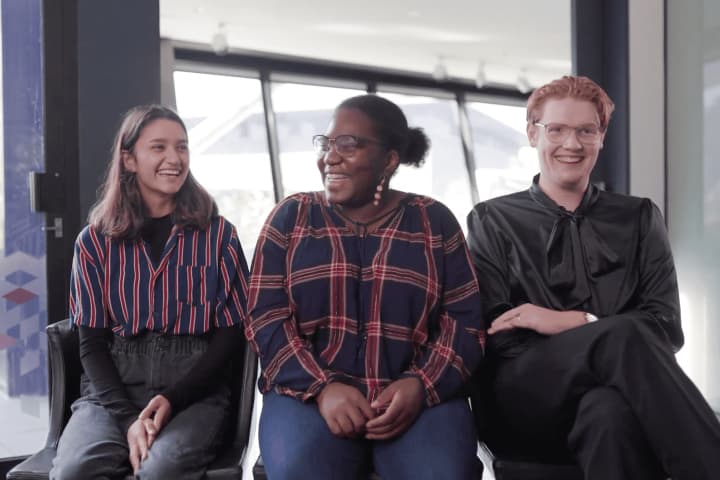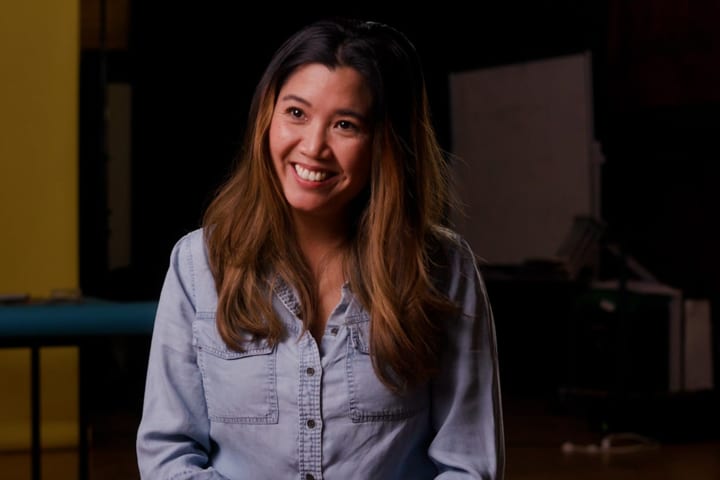Making theatre has traditionally involved bringing performers, crew and audience together in one place; it’s the same for students of drama, participating in school productions and learning vital lessons in a group environment. But what if you desperately want to be involved in theatre yet have no-one to act or make a play with? What if you can’t physically participate, due to isolation or any number of other reasons?
Reaching students with a passion for performing and stagecraft is not always easy. As well as those who can’t attend a physical school, some attend schools that are too small and understaffed to be able to provide Drama and Theatre Studies courses. This is where Melbourne Theatre Company’s partnership with Virtual School Victoria (VSV) plays a vital role. They’ve been working together since 2017 to bring theatre studies and drama to places and people who are left out of the loop, initially in Year 8, and this year at VCE level as well. This work may end up informing some of the Company’s plans during the COVID-19 shutdown, and beyond.
MTC joins the biggest school in the state
Thornbury-based VSV, formerly known as Distance Education Centre Victoria, is the key provider of distance education statewide; it reaches over 4000 pupils – more than any single school in the state – and offers around 135 courses. VSV enables students to achieve excellence by teaming up with first-class practitioners in a wide range of disciplines in order to deliver the curriculum.
The MTC/VSV partnership in 2017 was supported by Creative Victoria, which funded a pilot scheme for MTC’s involvement in the Year 8 online theatre course. It was a success and VSV has since funded the venture for the past two years. The course has featured high-calibre theatre practitioners as teaching artists, including Emma Valente, co-Artistic Director of award-winning company The Rabble; MTC Literary Associate Jennifer Medway, and set designer Jacob Battista.
‘It’s been a fantastic success and the kids love it, says John Bartley, VSV’s Head of Arts. ‘By having a partnership with a real world-class organisation, we get great expertise and a lot of this is multi-media,’ he adds.
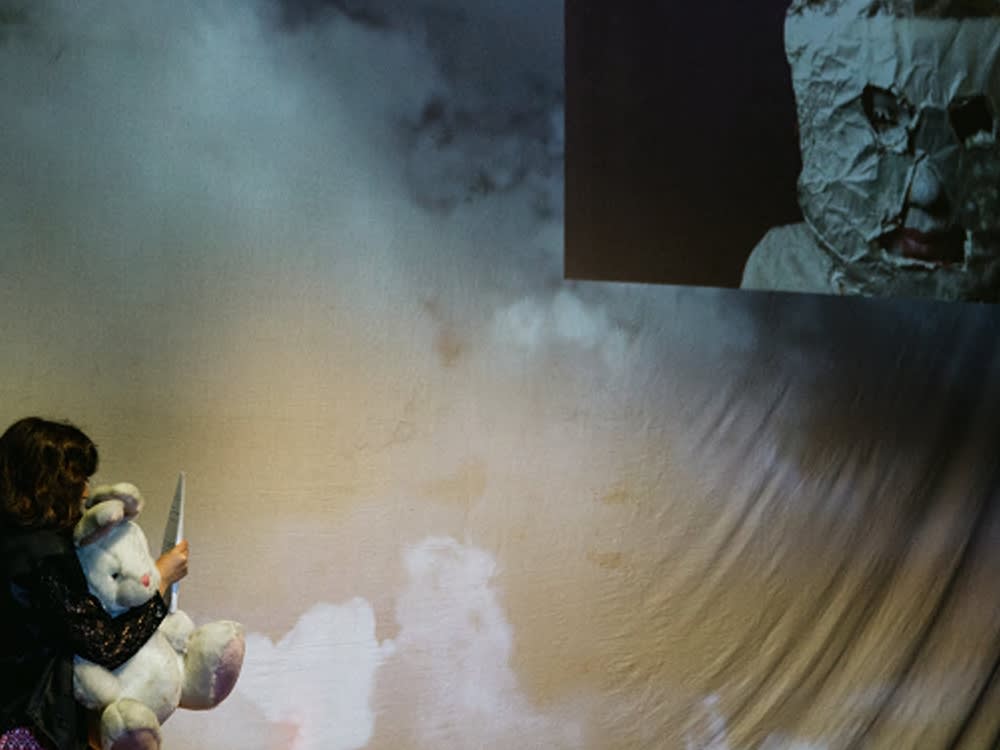
A student performs alongside their online peers as part of the 2018 partnership. Photo: Jacinta Keefe
Hi-tech VCE boost
Last year the collaboration stepped up to a new phase. In February 2019, State Education Minister James Merlino launched the VCE Collaboration Fund, a $1.2 million investment that is part of a far bigger $22.6 million boost for the range and quality of VCE courses in regional and rural Victoria. VSV plays a vital role in this promise; by 2021 it is committed to delivering every VCE subject, including Drama and Theatre Studies, and its collaboration with MTC is about to get more high-tech and interactive.
The VCE courses include videos, podcasts, interactive web-based animations and photo essays, and MTC and VSV have developed a virtual tour that shows step-by-step examples of MTC’s HQ where productions are created, as well as backstage. A similar virtual tour of Southbank Theatre is planned for later this year.
‘You don’t need the NBN, or a headset; it’s not virtual reality so you can just use your mobile.’ – Jeremy Rice, MTC's Head of Education and Families
‘We wanted interactive videos to illustrate key parts of the production process: how to build sets, how to direct, light, design sound. We needed resources that illustrate all this and MTC is creating them for us,’ says Bartley.
And in regard to the virtual tours, because it’s like a video game the format will be familiar to most students, says MTC’s Head of Education and Families Jeremy Rice. ‘It’s an animation anyone can walk through.’ But it’s not at the expensive end of high-tech, he adds. ‘You don’t need the NBN, or a headset; it’s not virtual reality so you can just use your mobile. We have to be conscious that a lot of young people have limited access to technology [of that sort],’ he continues.
Virtually backstage
MTC has teamed up with local company RealTour3D to create these interactive tours: walk-throughs that emulate the popular real-life HQ tours that the Company runs for schools, says Rice. The animation – the result of integrating thousands of images – allows participants to click on buttons for more information and follow links to videos and photo essays.
‘You’ll be backstage, then you’ll be looking at an empty stage and then you’ll go on a tour of the locations in which a theatre production is made,’ explains Rice. ‘We’re looking at different platforms and gaming provides some models.’
For the videos, podcasts and other resources, it is a team effort, utilising cast and crew from various productions. Nick Tranter, MTC’s Learning Manager, is working with VSV to create this special content that meshes with the VSV study design and VCE curriculum. He presents a lot of content via live stream, plus online seminars with playwrights, directors and actors, says Rice.
‘We’re looking at different ways to facilitate online and yes, the students can stop and ask. They can have more than one window open and in another there’ll be a PowerPoint with photos with annotated script and in a third a chat window and students asking questions by text. Teachers are also online,’ he continues; ‘they will answer some questions. Nick will answer some and others will be answered by actors. There’s a lot of mediation and translation.’
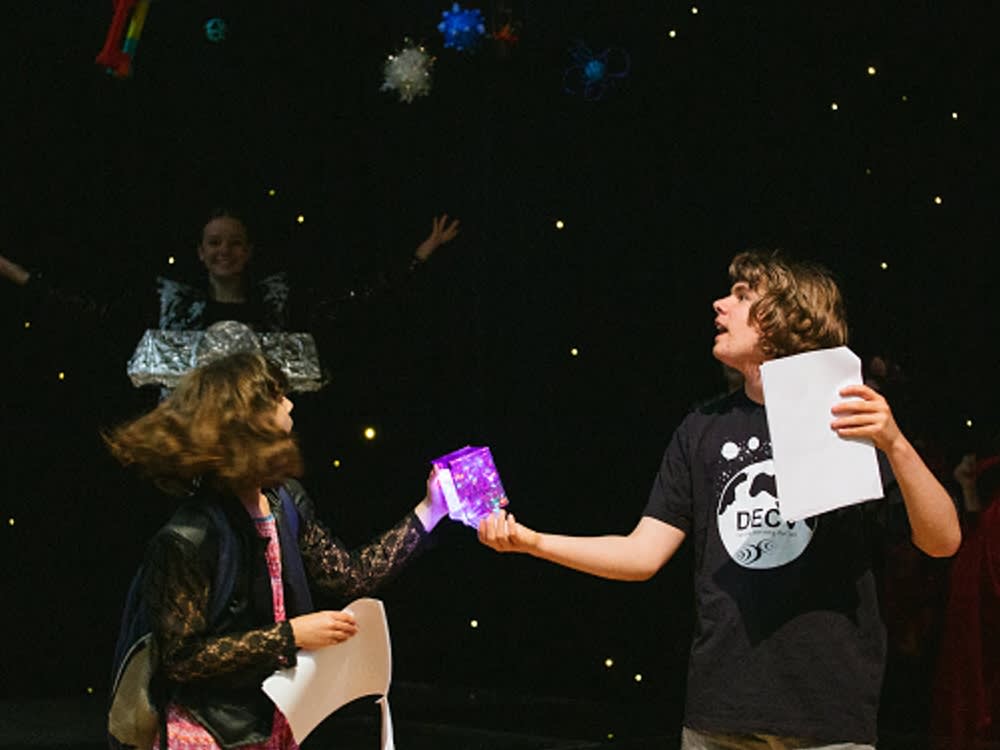
Students having fun during a 2018 performance. Photo: Jacinta Keefe
Approaches to acting, design and live streaming
This new content includes an Approaches to Acting mini documentary featuring actors Josh Price and Izabella Yena, stars of last year’s Education Production The Violent Outburst that Drew Me to You by Finegan Kruckemeyer. There’s also a series of videos where set and costume designer Anna Cordingley narrates her designs for Storm Boy, seen by thousands of students last year.
In 2020, VSV students enrolled in the VCE Theatre Studies course were scheduled to be the first audience to sample a live stream of an MTC performance from Southbank Theatre, says Rice. This has been postponed during the shutdown, but is still on the cards.
‘The format is a work in progress,’ Rice says, ‘because it’s about how to get people working together on performance projects and about shared learning experiences; that’s the 64,000 dollar question.’
There’s a lot of testing the new course along the way, agrees Bartley. The main writers of the course are experienced VSV drama teachers Kelly Jackson and Catherine Mayer along with multimedia input from VSV’s Martin McSherry.
Rice is happy about the division of labour: ‘VSV will work out how to teach; our core business is professional theatre and theatre education and giving access to theatre,’ he says. ‘So in all those conversations we focus on this – how you make theatre, then VSV will work out how to deliver.’
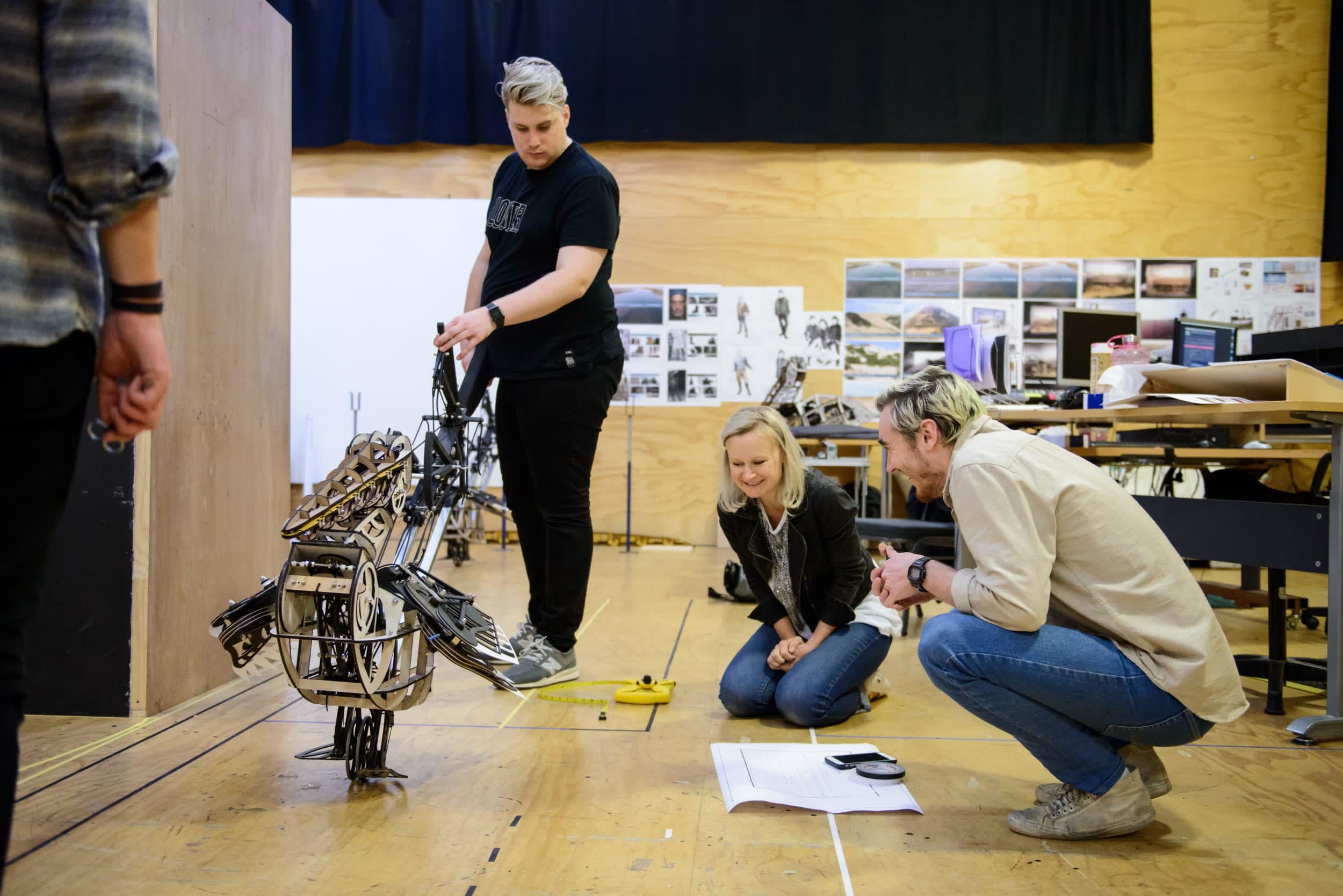
Anna Cordingley in rehearsal on Storm Boy. Photo: Deryk McAlpin
Students around the world
So who are the students typically taking these courses? The common perception that VSV caters for children in remote areas is only part of the picture says Rice. Up to Year 10, a majority – between 60-70 percent – live in Melbourne or regional centres; they will live near an educational facility, but for health or social reasons are not at these physical schools.
‘Our Year 8 students deal with a lot of mental or physical illness,’ adds Bartley. ‘They may be in hospital, suffer from Chronic Fatigue Syndrome or have mental health issues. For a variety of reasons they’ve struggled.’
The other 30 percent are split between ex-pat students who are temporarily outside Victoria – Rice says that last year they had one student based in Thailand and another in Egypt who participated in theatre projects – and students whose non-school commitments preclude a normal curriculum. Sports and dance students often fall into this category, part of an elite who train for more than 20 hours a week and don’t have time for a mainstream school experience.
‘MTC is helping VSV solve how to teach an online experience that is communal and collaborative.’ – Jeremy Rice, MTC's Head of Education and Families
After Year 10, the mix of students change radically, Rice continues. It’s then that the curriculum demands resources and group activities that many smaller schools can’t deliver. That’s true for smaller schools in metropolitan areas as well as remote and regional Victoria; many can’t offer specialist drama teaching and have the problem of not having enough drama and theatre studies students to form the necessary community to make work collaboratively.
‘Some schools try to group with other schools but if there are fewer than ten students it’s hard. Many schools are stretched for resources, so that’s where VSV steps in: students can enrol in any subject and MTC is helping VSV solve how to teach an online experience that is communal and collaborative,’ he says.
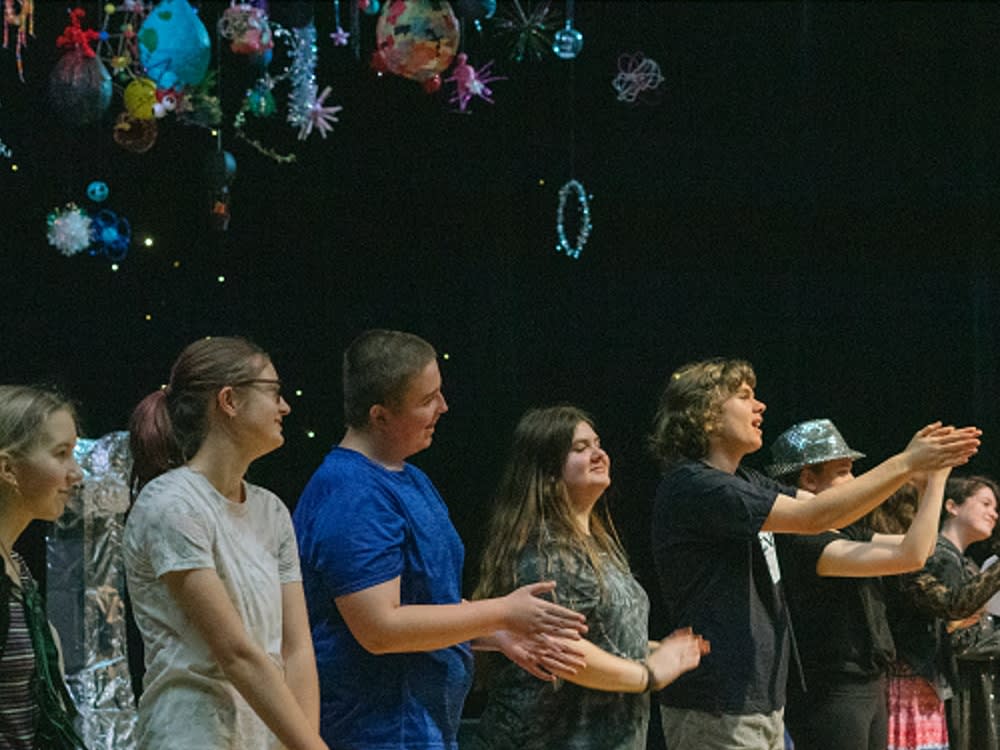
2018 students clapping in a curtain call. Photo: Jacinta Keefe
Breaking barriers to bring people together
As well as engaging students in a wide range of stage skills, both in front of and behind the stage, the collaboration has led to some lump-in-the-throat moments, says Rice. The first year’s course ended up being a large, group-devised production – most of the devisers of sets, costumes and sound and lighting design were participating remotely and the show required only two live performers: one was an accomplished dance student with plenty of confidence as a performer; the other was a student whose mental health issues prevented her going to school.
‘It was thrilling for all of us and shows the power of art to express and change our relationship with the world.’ – Jeremy Rice
‘They performed beautifully together and became friends,’ Rice recalls. ‘Her parents were in tears. It was thrilling for all of us and shows the power of art to express and change our relationship with the world.’
Bartley agrees: ‘For many of these students, joining the MTC workshops is a big deal, and they get to express themselves. Not all can participate physically but you end up with a multi-modal performance.’
It’s a sentiment Rice agrees with. But whether it’s devised virtually or physically, whether it’s a production that gets seen at a regional arts centre or on an MTC mainstage in Melbourne, the age-old verities of theatre remain the same. ‘We get a good clue that the curriculum is working when it asks students to consider the actor–audience relationship. That should be the defining characteristics of theatre,’ he says. ‘It’s all new and can be difficult. But it’s very exciting as well.
Published on 3 April 2020

